Cast iron skillets from the early centuries are worth the bucks for many good reasons. In fact, well-maintained skillets can get better with time to add value. But the trade involves marking detection, proper identification & exact pricing.
How can a novice or beginner like you get past the guidelines to attend a success? Well, the subject is definitely well-worth with lots of internet resources. However, our expert team narrowed down the essential points for easy understanding.
Table of Contents
What is Antique Cast Iron Skillet?
An Englishman, Abraham Darby, cast the very first iron skillet in 1707. His design featured thin-sided pots with a trio of little feet on the bottom.
And the resultant cookware enabled everyone to use an open fire for prepping meals. American companies set the foundation of large-scale production by the end of the 1800s.
Modern-day frying pan is not any different from the old-day cast iron skillets in the physique. Actually, it’s the iron quality that makes old-school skillets so valuable.
How to Identify Antique Cast Iron Skillet?
Finding a genuine, usable, precious antique requires close observation. And professionals let you identify an antique through the following considerations.
1. Examining the Bottom
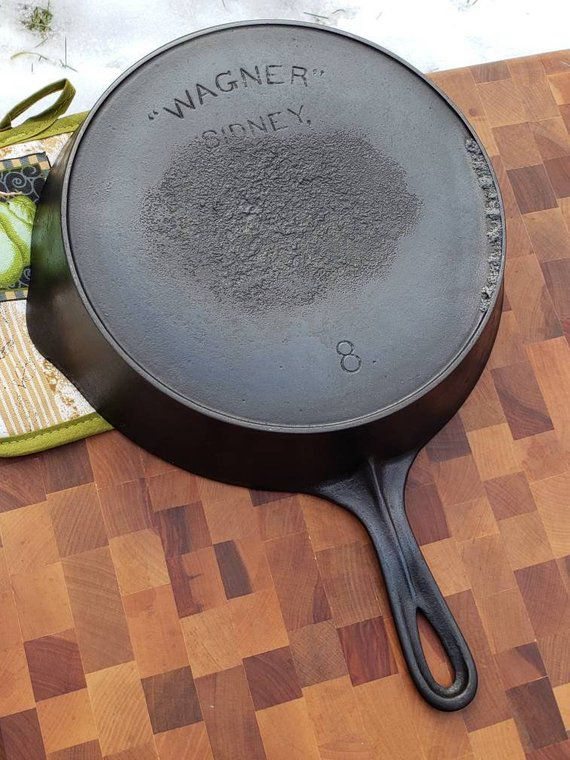
Almost all the antique skillets imprinted marks right on the surface of its bottom. But the marking pattern may vary depending on the manufacturer’s specs. Letters, numbers & letter-number combo with/without symbols represented the maker.
2. Starting with the Brand
Of course, you’re to continue digging the marks to track down the original manufacturers. Cast iron skillet was absolute cookware for every 19th-century kitchen. And a great number of companies held the industry to meet the heavy demands.
Check some noteworthy manufacturers from the past to specialize in high-quality skillets.
- Atlanta Stove Works (1898 – 1957)
- Griswold Manufacturing(1865-1957)
- Favorite Stove and Range Co. (1889 – 1935)
- Lodge Manufacturing Co. (1896 – Present)
- Selden & Griswold (1873 – 1957)
- Vollrath Manufacturing Co. (1884 – 1960s)
- Wagner Manufacturing Co. (1891 – 1952)
- Wapak Hollow Ware Co. (1903 – 1926)
You can look into the details of company marks from Leaf’s comprehensive discussion and List of cast-iron cookware manufacturers.
3. Antique Cast Iron Skillet Identification Marks
Likewise, you may face lots of trouble in tracking many less-known skillet manufacturers. And paying further attention to the logo instead of the brand can solve the problem. Utilize the available resources on antique skillet logos to find a match.
For example, early Griswold skillets had an imprint to imply Eerie (the founding location). Then the logo transformed to Griswold to follow Wagner Ware in later decades. So, it should be in your best interest to study the logos of branded manufacturers.
4. Exploring the Numbers
Almost every antique/vintage pan bottom features at least an isolated number or letter. Likewise, the simple letter or alphabet can confront the authenticity at the individual scale. Anything non-existent in the directory is either fake or unique to make decisions.
It can refer to the inner-outer diameter or crafting year/model/specialty. However, the single letter is likely to reveal the pan/skillet size from a standard scale. Therefore, don’t neglect the number or letter as you can receive definitive clues on its authenticity.
Get all the relevant details on classic skillet numbers from Cast Iron Collector’s article.
5. Inspecting the Spouts
The enclosing sides can tell a lot more about the skillet than you can imagine. Not to mention, the surface condition can deliver a visible difference from the new skillets. Older designs featured two well-defined pouring spouts perpendicular to the handle.
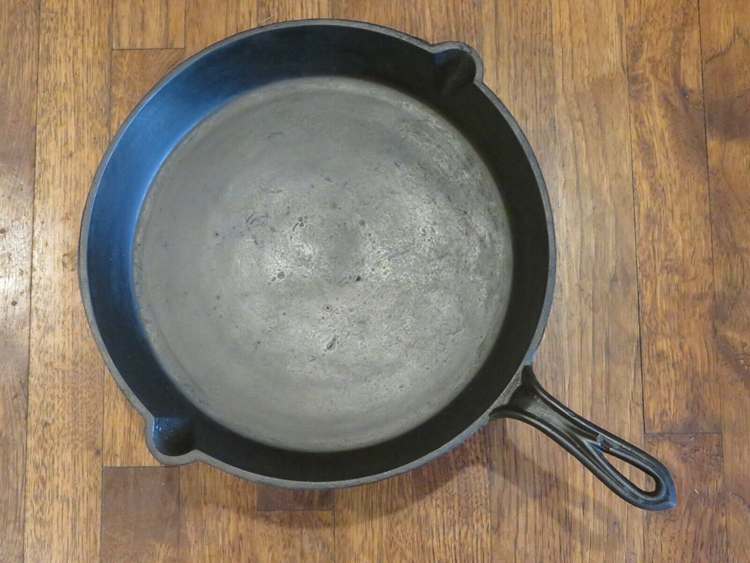
But recent-day productions will integrate a singular spout on the handle’s opposite. The spouts were clearly heavy due to the least advancement of precise crafting technology. Of course, no helper handle or non-stick coating was available for the antiques.
6. Closer Look at Handle
Antique skillets held the cooking pan with its handle altogether without discontinuity. It’s undeniably a clear distinction from the modern-day designs from every aspect. Heavily insulated polymer handle remains attached to the steel pan with screws/rivets.
Therefore, you can’t expect the old ones to have any joining screws or rivets. Also, grooved or silicone grips are a rather recent addition to the popular cookware. Completely smooth surface finish prevailed for the single-unit handle with/without marks.
7. Feeling Skillet Weight
Modern skillets feature lightweight aluminum as well as dependable stainless steel constructions. But the earlier old-school designs had high-quality cast iron of significant thickness on all sides. And it directly contributes to the free skillet weight on hands.
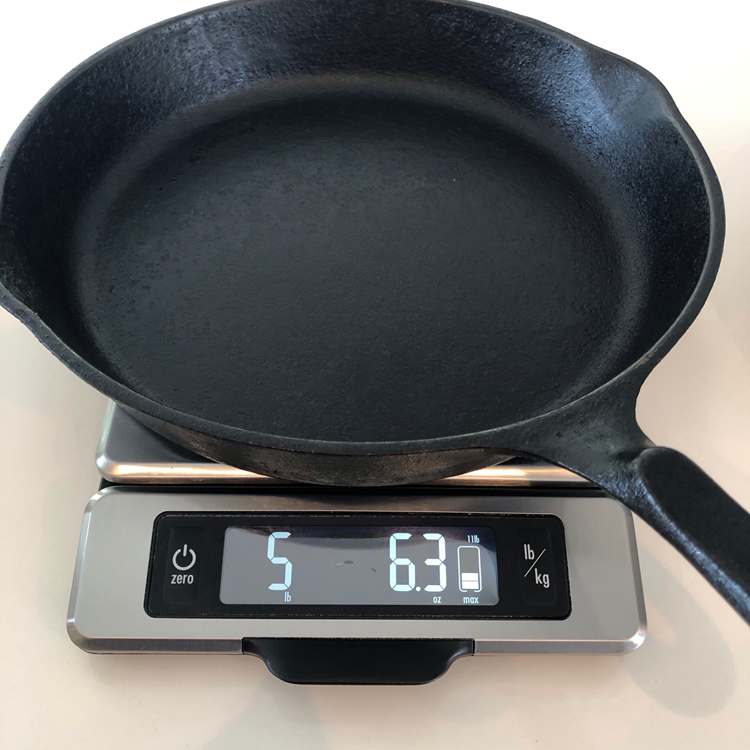
The average weight of an antique skillet should range from 4 lbs up to 12 lbs. However, standard skillets in the 19th-century kitchens had 12”m diameter to weigh around 8 lbs. Of course, the actual weight should differ by size & material thickness.
8. Aging Sign (Rust & Warp)
The hundred-year-old iron has to contain deterioration or damage marks as aging signs. However, we’re explicitly talking about somewhat visible rusts or warps on the surface. The brownish/reddish-colored rusted spots may even check acid erosion.
Classic burning fire from coals should leave precise damaging marks on the bottom. And the warps usually occur right on the middle section due to uneven heat distribution. However, it’s essential to retain the condition as far as possible for valuation.
Online search will get you thousands of results on antique cast iron skillet identification. You can look into Boochie Hicks or The Kitchn article to know classic cast iron.
YouTube also contains many great videos on cast iron skillets. Consider starting with the videos on Cast Iron Chaos, The DCpicker, EcoTechnify, Homesteading Family.
Identifying Unmarked Cast Iron Skillets
There were many local manufacturers to skip the markings on anywhere on the skillet. Eventual erosion of the bottom can even distort the marks on fire. Right there, you may have to pull lots of strings to reach the actual skillet manufacturer.
Cast Iron Collector provides exclusive writing on unmarked skillet identification. Also, experienced traders already pointed some actions to initiate your hunt for the ghost.
- Contact local dealers to know info on the missing or damaged logos.
- Inspect the texture closely to find out any initials, letters, or alphabets.
- Try to understand the relatively less damaged section on the bottom.
- Determine the skillet’s sizing, spouts, shape & other physical details.
- Assess any special marks on the inner diameter/handle & even sides.
- Don’t forget to take a closer picture to seek consultation from experts.
- Upload the captures pics to google for exploring the matched results.
Some of the anonymous skillets are recent reproductions or vintage for branding. Meanwhile, you can fi8nd lots of restored or refinished skillets under Wapak. However, many stores actually strip the original marking to imprint Wapak’s logo.
It results more like somewhat valuable ‘knock-off’ skillets for general trading. The problem concerns lowered pricing due to several reasons. And you need to ensure that the intended or targeted skillet is strictly an antique/vintage.
Valuation of Antique Cast Iron Skillet
Intended cast iron on classic skillet featured an extremely analogous construction strategy. Of course, the entire design was primarily handmade till the last century. Vintage skillets were partially machine-made to revise the conventional concept.
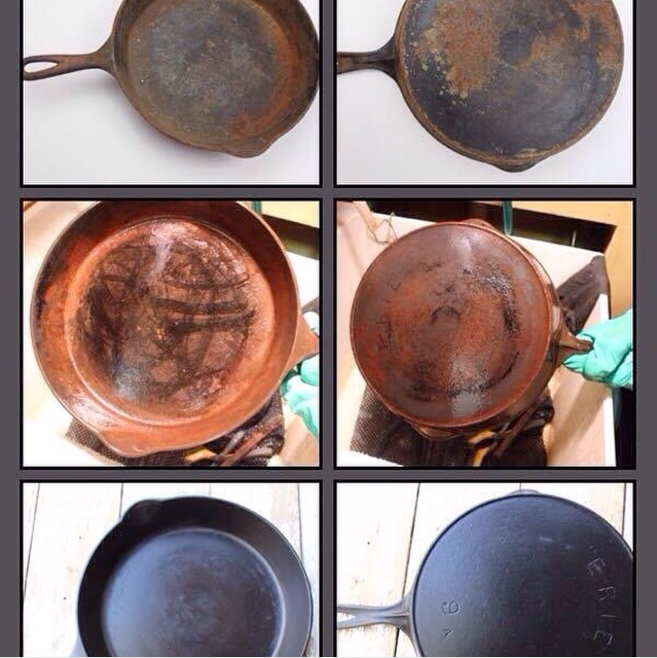
Necessary amount of molten cast iron was directly poured into already-prepared sand molds. The maker simply grounded the hardened skillet using stone. Excellent smoothness with surface flatness prevails to hold the attention of conscious collectors.
That’s where you need to evaluate the actual value of a possessed or targeted skillet. It’s an essential part of antique trading right after confirming the authenticity. And you must start considering the points sorted by professions for appropriate pricing.
- Note all the details & take closer pictures for proper evaluation.
- Retention of good physical condition gets incredibly good value.
- Unusual as well as unique skillets should receive a greater price.
- Anonymous skillets with vague marking may reduce acceptance.
- Trusted sources on provenance will set a skyrocketing increase.
- Restoration or refinish can set the amount low on specific cases.
- Handcrafted skillet will value more than a partially machined one.
- Pristine surface condition is essential to attend reasonable buck.
- Know the essential info to differentiate reproductions & recast.
- Browse relevant online shops to check a skillet’s pricing range.
- Stay up-to-date with auctions, sales & offers to sort the pieces.
- Contact forums, community & experts to make an exact valuation.
The value for an old/vintage/antique cast iron skillet can start from a mere $50 to reach $1500. As you can understand, the range of possibility is incredibly wide to say without facts. Likewise, all the essential points will decide the actual value for trading.
Of course, you should appoint an appraisal for a good price to evaluate the precise value. It can save you unexpected hassles in the market on purchase/sell.
Final Words
Spending on worthy skillets remains a great hobby among passionate collectors. But not everyone can settle for the right purchase for the right price. You’ll get to know the essential points on antique or vintage skillets from the article.
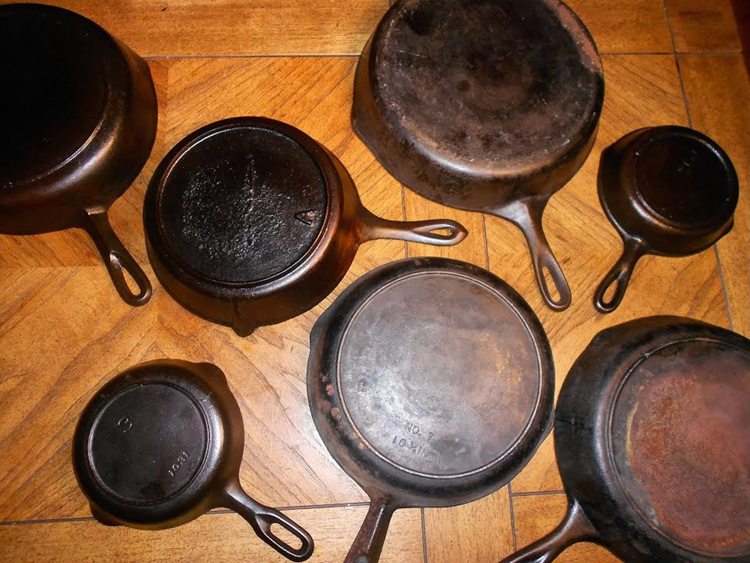
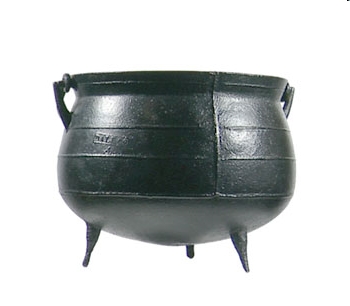
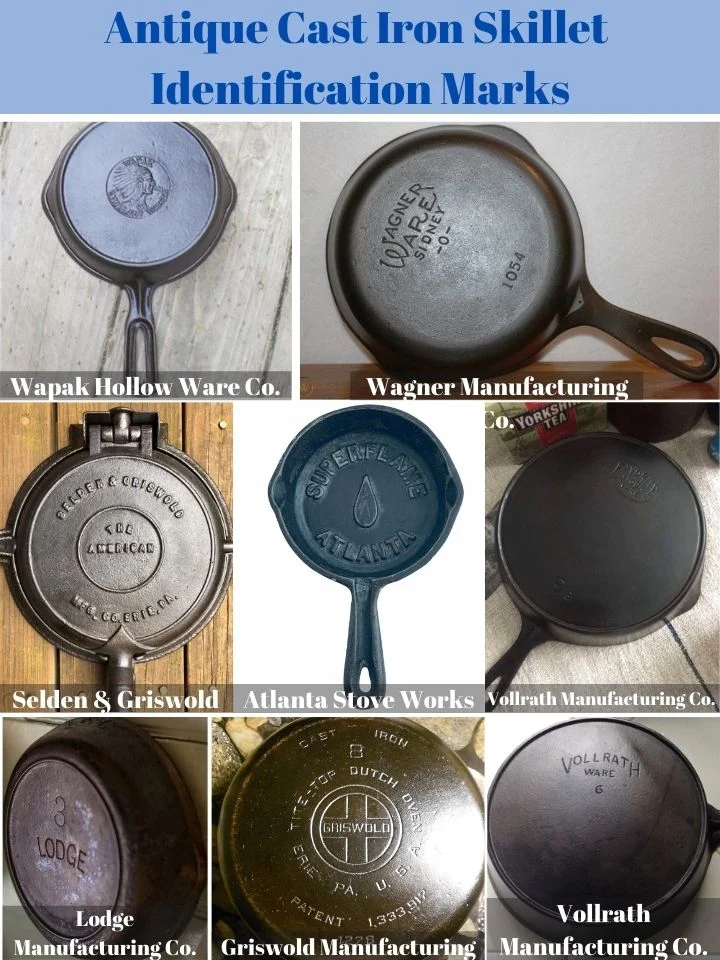
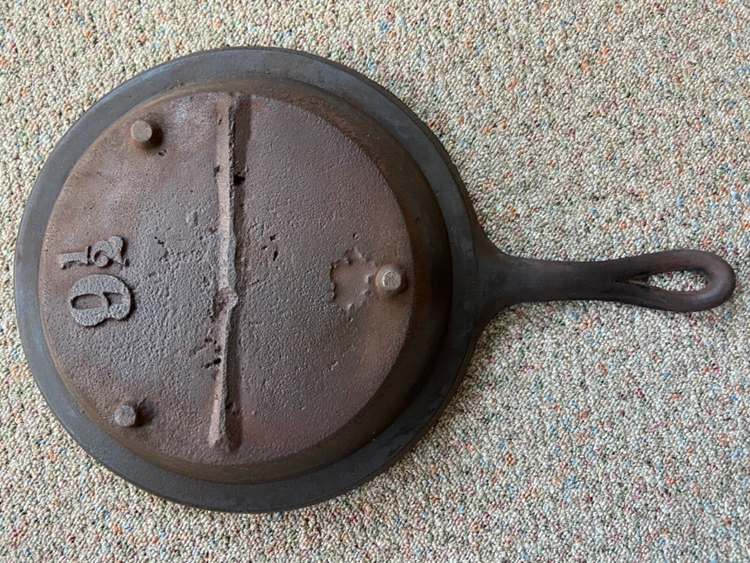
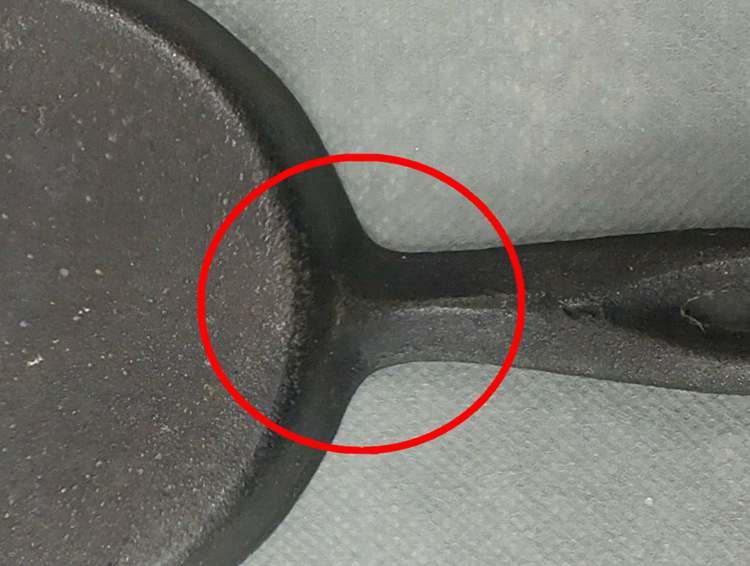
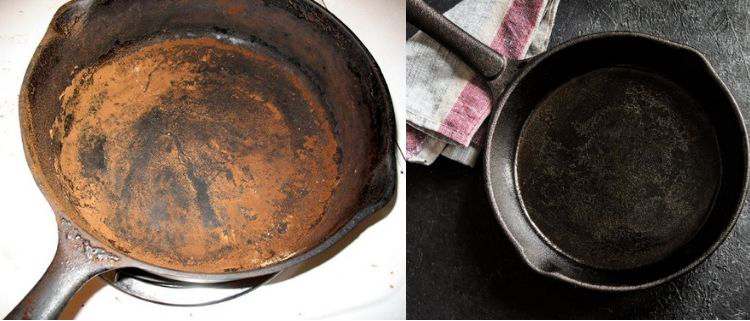
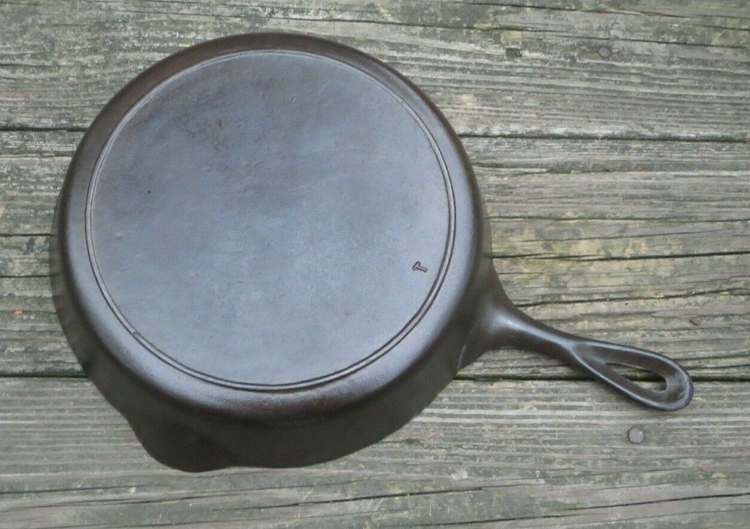






![Vintage Schwinn Bikes: [Types, Identification, and Values]](https://www.txantiquemall.com/wp-content/uploads/2022/05/5.-Schwinn-1967-Ramshorn-Fastback-Stingray-Sky-Blue-vtg-600x450.jpg)
